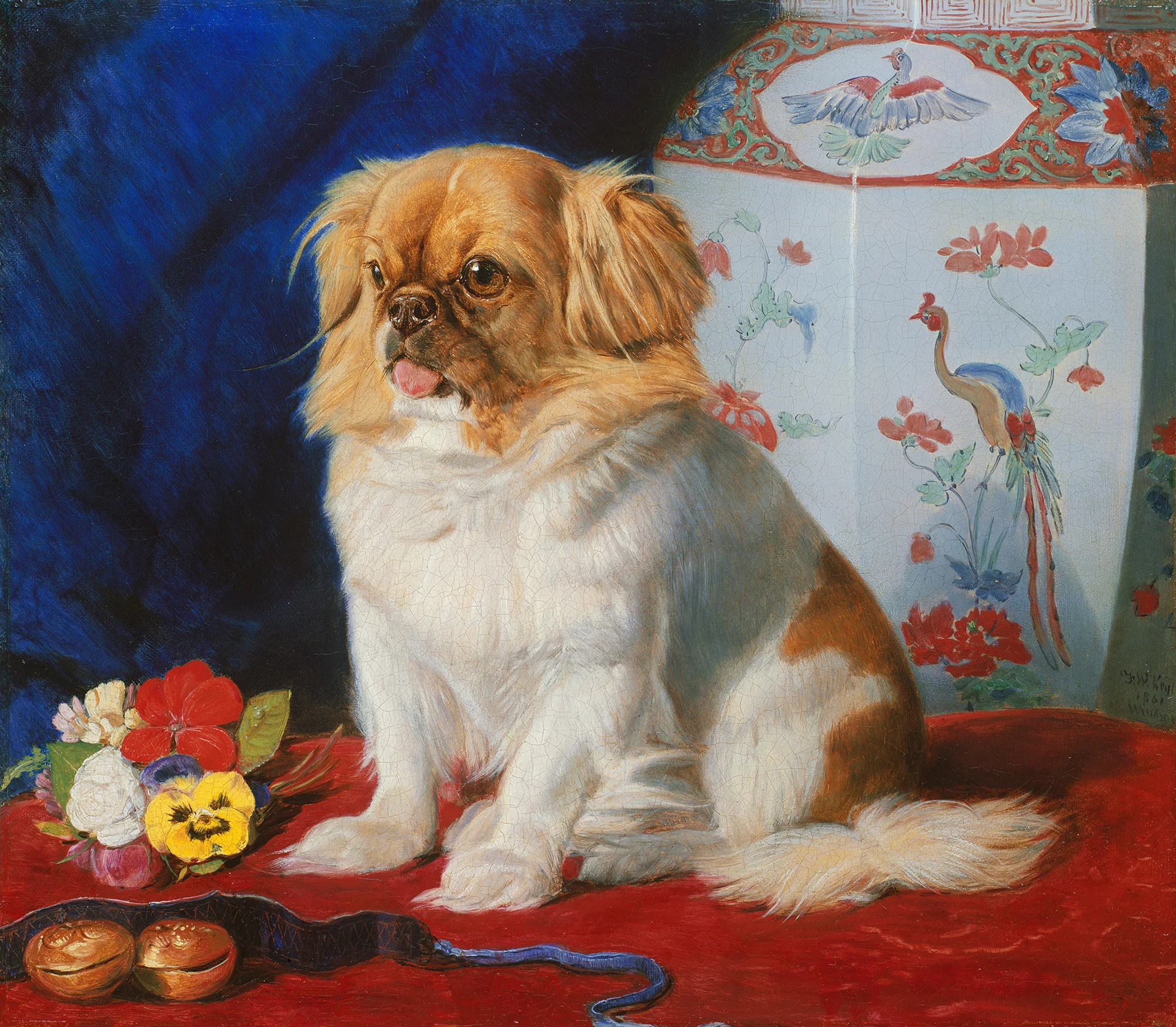‘Looty’: The Tale of a Dog Stolen from China That Ignited a British Luxury Frenzy
In an 1861 portrait commissioned by Queen Victoria of Britain, a Pekingese dog sits gracefully on a cushion, peering into the distance beside a Japanese vase. Revered for its endearing flattened snout and regal appearance, this canine addition to the queen’s retinue, a breed of toy dog previously unseen in Britain, swiftly emerged as one of the most coveted luxury items among the elite.

However, behind this gentle facade lay a harrowing history.
A year prior to the completion of German artist Frederick William Keyl’s painting, Anglo-French forces laid siege to Beijing’s Old Summer Palace, reducing the expansive “Garden of Perfect Brightness” to rubble. Legend holds that as the Xianfeng Emperor and his court fled the onslaught, an elderly aunt chose to remain, meeting her demise surrounded by a devoted litter of Pekingese puppies. Seized by soldiers amidst the chaos, these dogs were clandestinely transported to the West, along with a trove of plundered treasures.
While aspects of this origin story may be embellished, the Pekingese depicted in the painting undoubtedly arrived in Britain via Captain John Dunne of the 99th Regiment, participants in the palace’s pillaging following the killing of British envoys by the Qing dynasty government.
“People say it is the most perfect little beauty they ever saw,” Dunne noted in his journal, bestowing the dog upon the queen, who christened her Looty.
Looty’s introduction, alongside subsequent arrivals and local breeding efforts, incited a fervor among society’s upper echelons, enduring beyond Victoria’s reign. During the Edwardian era, lavish sums were lavished on acquiring these prized dogs, with one lord reputedly spending over £3,000 — a staggering sum in contemporary terms — for just “a few” canines.
The allure of owning a Pekingese rested in its perceived exoticism and storied provenance. Advertisements touted their “smuggled” status from China, intertwined with sensational narratives of palace intrigue and larceny by servants. Owners romanticized the dogs’ supposed “oriental” traits, attributing their aversion to thunderstorms to traumatic encounters with tropical tempests, and insisting they refused to mate with dogs of differing hues due to a reverence for the yellow hue, sacred to the Chinese emperor.
Yet, as with any colonial fetishization, Pekingese ownership also served as an expression of colonial nostalgia, allowing women to assert their status as inheritors of colonial wealth, equating both themselves and their canine companions with aristocracy.
Breeding clubs and exclusive gatherings further perpetuated this obsession, with events like the Pekingese garden party in London, attended by esteemed guests and their prized pets, embodying the pinnacle of opulence.
The breed’s ascendancy paralleled a broader fascination with Chinese culture, manifested in the European art movement of Chinoiserie. Pekingese frequently adorned artworks alongside East Asian artifacts or adorned in imperial regalia, evoking a romanticized vision of Imperial China.
However, changing societal attitudes and increasing exposure to modern China precipitated the Pekingese’s decline in popularity. By the late 20th century, the breed was deemed passé, associated with antiquated luxury and impracticality.
Despite its diminishment in favor, Looty’s saga endures as a poignant reminder of Britain’s imperial past and the perils of cultural appropriation. Recently, efforts to reclaim her narrative have emerged, from speculative novels to digital art projects seeking to rectify the legacy of European colonization.
Looty’s journey epitomizes the complex interplay between history, power, and identity, a narrative that continues to resonate in contemporary discourse.
